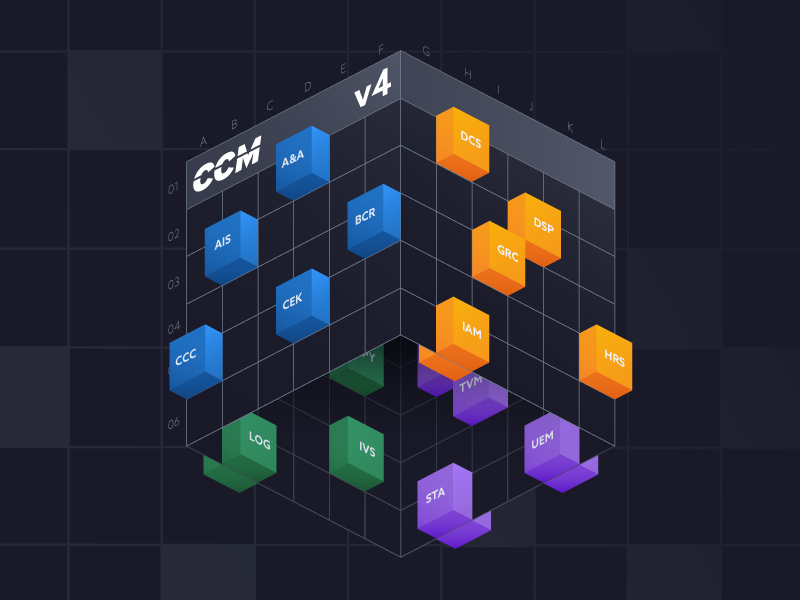CCM v3 Introduces Reverse Mappings, Gap Analysis
Blog Article Published: 06/26/2018
By Sean Cordero, VP of Cloud Strategy, Netskope
Since its introduction in 2010, the Cloud Security Alliance’s Cloud Control Matrix (CCM) has led the industry in the measurement of cloud service providers (CSP). The CCM framework continues to deliver for CSPs and cloud consumers alike a uniform set of controls to measure the security readiness of a cloud-centric security program. It continues to be the industry standard used to measure, evaluate, and inform risk, information security, and audit professionals on the best practices for securing cloud services.
Consistent with the CSA’s commitment to driving greater trust, assurance, and accountability across the information risk and security industry, this latest expansion to the CCM incorporates the ISO/IEC 27017:2015, ISO/IEC 27018:2014, and ISO/IEC 27002:2013 controls, and introduces a new approach to the development of the CCM and an updated approach to incorporate new industry control standards.
Core to this release of the ISO 27017:2015, 27018:2014, and 27002:2013 reverse mappings and gap analysis were two additional goals defined by the CSA and the CCM Working Group:
- Improve the ease of operationalization and measurement for all new controls.
- Increase the flexibility for CSPs and cloud consumers adopting additional control frameworks while retaining alignment with the core CCM controls.
Improved ease of operational usage and measurement
The avoidance of overly prescriptive control statements has been central to the CCM’s control development philosophy. This approach was required to avoid duplication across other control frameworks and to avoid rework for security and audit professionals. While this approach is reflected in the language of the CCM, this intentional lack of specificity has made it, at times, challenging to fully integrate into architectural and validation efforts. To address this within the language for the newly developed controls two key changes were made—first, to the alignment of the core of the research team and second, to the method of delivery for new controls.
First, two working group sub-teams were created and leaders of each identified. One group specific to information risk management and the other for audit and control measurement. To ensure that both teams brought to bear their collective expertise across the entire revision, each team then collaborated on the review of the work product of the other team, which has led to the most comprehensive and well-defined release of the CCM to date.
The information security team was led by Ai Ping Foo. Her team focused on the identification and creation of new controls and mappings with a focus on ensuring the incorporation of these controls across security architectures.
The assurance team was led by Ahmed Maaloul, whose team drove the creation of the new controls and mappings with a focus on ensuring control clarity, ease of measurement, and reproducibility for audit and assurance professionals.
Improved flexibility and delivery for new controls
This latest release of the Cloud Controls Matrix introduces reverse mappings and gap analysis to the CCM program. We believe that this approach allows organizations to continue their alignment to the core CCM standard while giving the option of further expanding their controls without disruption to any STAR certification efforts underway or existing certifications.
As the CCM framework continues to mature we are confident it will give security, audit, and assurance professionals the most flexibility for control identification without compromising the existing CCM controls.
The CCM continues to define the standard for trust, assurance, and control for security, audit, and compliance analysts when conducting operations in the cloud. This latest release reflects the CSA’s and the CCM Working Group’s continued commitment towards ease of use, flexibility, and uniformity across the multiple disciplines which enable trusted cloud operations.
The success of the CCM continues to be the result of the dedicated professionals within the CCM Working Group. This latest release would not have been possible without the expertise, focus, and collaboration of the following working group members:
Security Team Leader: Ai Ping Foo
Assurance Team Leader: Ahmed Maaloul
CCM Working Group Volunteers:
- Ai Ping Foo
- Adnan Dakhwe
- Ahmed Maaloul
- Angela Dogan
- Alejandro del Rio Betancourt
- Bunmi Ogun
- Chris Sellards
- Chris Shull
- Eric Tierling
- Josep Bardallo
- Kazuki Yonezawa
- Kelvin Arcelay
- Madhav Chablani
- Masashiro Morozumi
- Mariela Rengel
- Mohin Gulzar
- Muswagha Katya
- Noutcha Gilles
- Puneet Thapliyal
- Shahid Sharif
- Saraj Mohammed
- M. Reid Leake
- William Butler
Download the latest version of the CSA Cloud Control Matrix.
Sean Cordero has over 18 years of IT and Information Risk Management. He has held senior security executive roles at leading bio-technology, financial, retail, and consulting organizations. Cordero is the Chair of the CSA’s Cloud Control Matrix Working Group and serves as the Co-Chair of the CSA’s Consensus Assessments Initiative Questionnaire. Cordero was honored by the CSA with the Ron Knode Service Award in 2013 and inducted as a CSA Research Fellow in 2016. Cordero is a certified CISSP, CISM, CISA and CRISC.
Related Articles:
CSA Community Spotlight: Establishing Cloud Security Standards with Dr. Ricci Ieong
Published: 04/03/2024
CSA Community Spotlight: Propelling the Industry Forward with Larry Whiteside Jr.
Published: 03/12/2024






